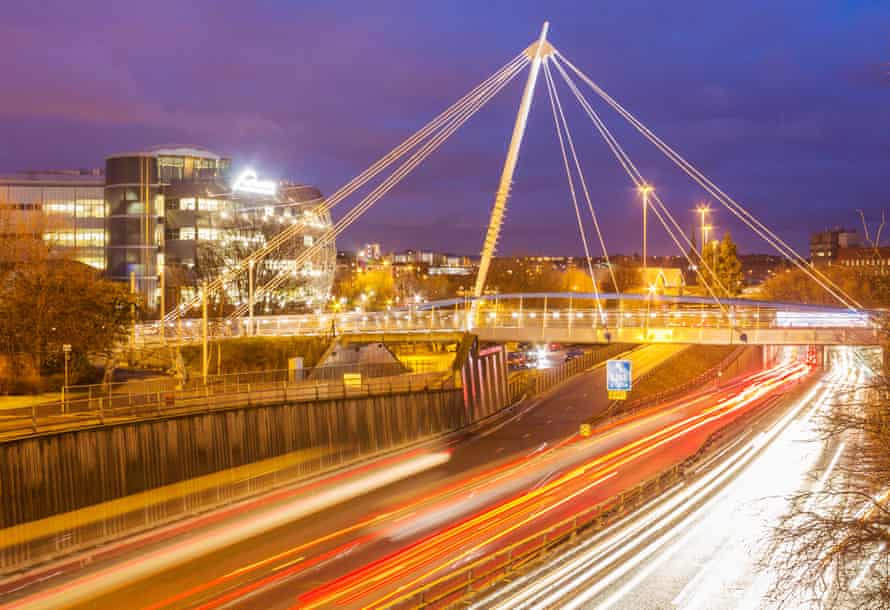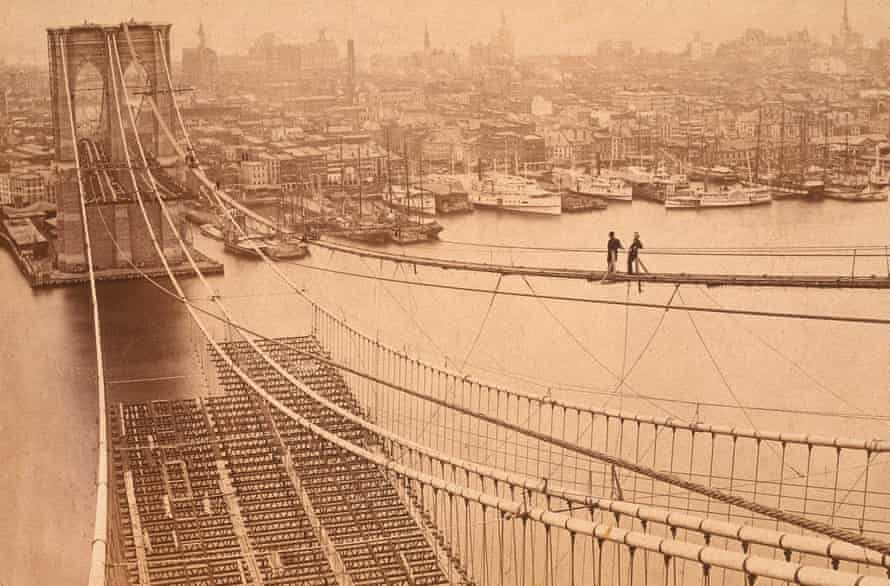My Husband Is a Structural Engineer Funny
R oma Agrawal likes to stroke concrete. Her snaps from a holiday in Italy are of arches and bricks ("so many different types of arches," she enthuses, "so many different types of bricks"). A typical leisure activity – "a few weekends of good geeky fun" – is building a large Lego model of Big Ben. The man who is now her husband, whom she initially disparaged to her friends as "Flirtman", wooed her by sending daily emails on a "Bridge of the Day". ("An example of why you should do a proper damping analysis," read the first, which was about the Tacoma Narrows Bridge collapse of 1940.) "When we realised the geeky fascination we both had," she says, "we clicked."
She loves buildings, construction, materials, the ways in which things stand up, how they're built and the stories of how they got to be there, the interactions of humanity, matter and mathematics that give us skyscrapers and bridges. Also more modest structures. "I wake up in a warm home. Why is it not sinking or falling down? Every minute of the day its structure is working. Who are the people behind that?"
Engineers, is the answer, of which she is one, having discovered the profession best suited to her passions. She feels her job doesn't get the credit it deserves. "People appreciate that they live in a warm building or have bridges to cross," she says, "but they don't appreciate how they came to be there. You can live in a city that works really well, and a country that works really well, but you only hear about engineering when it goes wrong. 'Engineering works' are the reason trains are delayed." And, while the identity of the architect of the Shard in London, Renzo Piano, is well known, its engineers are not. They were a company called WSP, with Agrawal one of the team.
Her sense that engineering is undervalued has motivated her to proselytise for it, giving talks in schools, going on TV and now writing a book, Built, which seeks to share her enthusiasm with the general reader. She says: "I'm trying to engage people who don't even know they're interested in buildings" – which, as we all live in and around them, should be all of us. So the book explains as simply as possible the basics of columns, beams and arches, before moving on to more complex stories, such as the ingenious way in which engineers dealt with Mexico City's vast stone cathedral sinking into the soggy ground underneath it.
She tells the human stories behind great structures. Although it might seem a sane and reasonable business, the world's great engineers, she believes, were "very eccentric characters, all very tenacious, the sort who were cheeky at school and didn't do what their parents wanted them to do". For example the "mischievous and lively minded" Fazlur Khan, born in 1929 in Dhaka in what is now Bangladesh, who went on to invent the exoskeleton, which is how really tall buildings like the Burj Khalifa in Dubai stand up.

She believes that there was a time, the 19th century, when engineering generated fascination, excitement and respect, when bridges, tunnels and railways were reshaping cities and countries. It was also a perilous pursuit, as untried techniques were pushed up to and beyond the limit. She describes how Henry Bessemer, inventor of the process that revolutionised steel production, nearly blew himself up; how floods killed many workers while building the tunnel under the Thames that Marc Brunel and his son Isambard Kingdom designed. The younger engineer was himself nearly one of the casualties. In those days engineering "was like going to war – you expected people to die."
One of her most memorable tales is of the construction of the Brooklyn Bridge, whose chief engineer, John Augustus Roebling, died of tetanus after he injured himself on site. His son Washington took over, only to be made seriously ill by the effects of working inside the caissons – large chambers submerged into the river, to keep the water away from the construction work. The air in the caissons was kept at high pressure to resist the water, which caused "caisson disease" – joint pain, part paralysis and depression – what divers would later call the bends.
Washington's wife, Emily, gradually took over, acting at first as her husband's representative, before becoming the de facto leader of the project. She had previously taught herself engineering alongside her husband and set about understanding every technical aspect of the bridge. She also showed what Washington called "her remarkable talent as a peacemaker", her ability to manage the competing egos of investors, politicians, officials, contractors and labourers. At a time when, as Agrawal says, "a woman's presence on a construction site was unheard of", she brought into being one of the greatest engineering works of her time.
Agrawal traces her interests to her early childhood in New York, to the thrill and thrall of skyscrapers, and a curiosity about the ways that things go together. This continued after she moved to Mumbai with her family, and then to Oxford to study physics. It was only when she did a summer job in the physics department, and saw engineers designing specialist equipment, that she realised she wanted to be one.
She was inspired, in particular, by the design of a metal holder for a lens, a simple enough task, as she says, except that it would have to work at -70C. As metal contracts in the cold more than glass, this would cause the lens to crack if it wasn't done right. "It dawned," she says, "that the process of design traces every single stage" – not just the equipment, but the cases in which it is carried around.
There are many types of engineer to choose from – electrical, aeronautical, civil – but she chose to be a structural engineer, a designer of the structure of buildings, perhaps because of the early impact of those American towers. She studied engineering at Imperial College London and went to work at WSP, where she helped design a footbridge for Northumbria University in Newcastle and assisted with the foundations of the Shard and the open steel structure at its top. She also worked on a Georgian house in Mayfair and an addition to the Victorian Crystal Palace station in London. She now works for Aecom, a global engineering company that covers most aspects of designing and running buildings.

Her urge is towards simplicity and clarity. She likes it when you can see how a building works – the big diamond pattern on the outside of the Gherkin, for example, which gives it rigidity and strength. She liked working with Renzo Piano's office: "My understanding is that Piano's father was a joiner, so he pays a lot of attention to putting things together. I loved that." She hopes that, once they've read Built, people will be able to look out of the windows of an underground train, see the metal rings of the tunnel and think: I know how that works.
She also realises that, in construction, "there are thousands of people involved and they all want different things". They might be concerned with cost, aesthetics, the environment or the structure, all of which have to be brought together. If building can therefore be fraught with difficulty, Agrawal makes it sound like a remarkably serene process. "You have to think of all the aspects really early," is her secret for a peaceful project, "so it doesn't become a battle."
The understanding that engineering is not just about getting calculations and details right, but is also about collaborating with other people, is one reason why the great peacemaker Emily Warren Roebling is a hero to Agrawal. And that she was a woman in what is still a very male business. Agrawal knows what this is like: she has been in meetings where she was the only woman among 21 people, has been mistaken for a secretary or the junior of a male colleague, who was in fact junior to her, been asked to make tea and take minutes, had to discuss business in site huts lined with pictures of naked women, and found the women's toilets on building sites either locked or used by men. There may be no protective site clothing in her size, so she got into the habit of bringing her own.
"It has got better," she says. "There's a more welcoming environment, but there's still a long way to go." She hopes that Built will help the process by shining light on the unsung women of engineering. One is Isambard Brunel's sister Sophia, "the great engineer we never had", who was more technically gifted than her brother, but was denied the opportunity to put her skills into practice. "I have the feeling," Agrawal says, "that there were very entrepreneurial women around, but their stories have been lost."
Other engineers who have written about their work tend to stress their role in working with architects to create unprecedented structures and forms. Peter Rice, who helped design the Pompidou Centre, is one. Cecil Balmond, one of the creators of the Orbit sculpture for the 2012 London Olympics, is another. Agrawal, at the age of 34, is not one of these structural auteurs. Collaborative and unpretentious, she just very much likes what she does, and wants other people – especially girls and women – to know how good it is, too.
Source: https://www.theguardian.com/artanddesign/2018/feb/11/roma-agrawal-structural-engineers-are-unsung-heroes-interview-shard
0 Response to "My Husband Is a Structural Engineer Funny"
Post a Comment